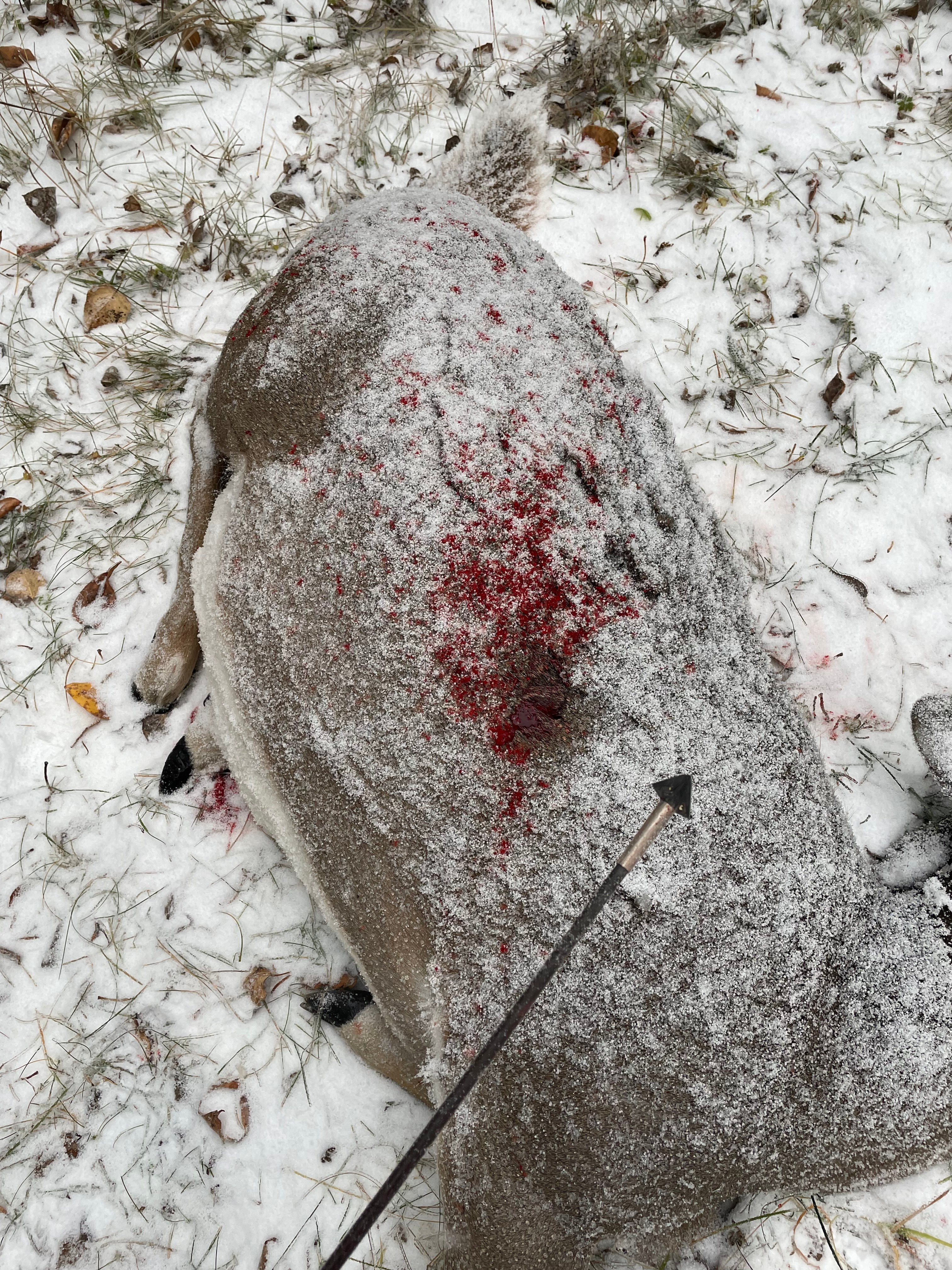Is 1” of Cutting Diameter Really Enough?
February 20, 2024 by Leigh Hauck
One of the most common reasons you will hear mechanical broadhead fanatics say that they shy away from fixed blade broadheads is cutting diameter.
While many fixed blades come in large cut options such as the Tooth of the Arrow XL series, a huge number of fixed blade broadheads available today are just 1-inch in cutting diameter and there just aren't fixed blades that can compare to the 2-inch cuts you see in so many mechanical broadhead designs.
Is there truth to a larger cut being superior in broadhead design?
It isn't quite this simple. Our 1-inch 4-blade models are our bestselling broadheads, yet there is still so much speculation in the community about -inch of steel simply not being enough to kill.
In this week's blog, I am going to break it all down and bust that myth!
The massive 2-inch+ cutting diameter broadhead movement has been a huge trend in the archery industry for a few reasons, but primarily one: gore sells. Don't get me wrong, I have shot a lot of animals with broadheads exactly like what I just described, and I have seen some incredible wounds.
Shop All Broadheads
While I have seen some of the goriest kills of my life with the aforementioned broadhead design, I can't honestly say I have found them to be more lethal than the 1-inch Tooth of the Arrow Broadheads that I have been shooting exclusively for 5 years now.
Smaller diameter heads will penetrate better than large ones. Simple. Less surface area tends to less friction, meaning a greater carry of energy through an animal.
Shop All Broadheads
Animals bleed by way of cutting blood vessels, in any direction. If you take a wide 2-inch two-blade head and shoot it into a target and it penetrates ten inches for example, that head has done twenty inches of cutting.
If you take a 1-inch 4-blade head and it also goes ten inches into the target, it has also done twenty inches of cutting. Still following me?
Since smaller diameter broadheads penetrate better than larger ones (and fixed blade heads tend to penetrate better than mechanicals), a shot into the same target with the same bow and arrow setup with each head will drive that small fixed into the target deeper than the wide mechanical. The result is more cutting.
A smaller broadhead that goes deeper into an animal - or all the way through - does more cutting than a massive broadhead that only goes halfway through. The cutting just happens on a different axis.
Now you might be thinking: "sure, but if I get a pass through with my large mechanical then it does more cutting than the small, fixed blade".
Absolutely you are right, but clean behind-the-shoulder shots aren't the point of concern here. When you hit an animal clean behind the shoulder, there isn't much resistance. Even if you hit a rib square-on, you are probably going to get a pass through if you have even average weight behind your bow.
The issue is those quartering toward shots where you have no choice but to put an arrow through some of a shoulder, or string jumps when your perfect shot turns into a misplaced arrow by no fault of your own.
Shop All Broadheads
These are the far more common types of shots we see in bowhunting, and we need to set ourselves up with the greatest chance of cutting deep and getting a pass through on these types of shots. That's where 1-inch broadheads come in. You will do more cutting with one of those than with a big 2-inch blade that stops when it meets scapula.
Simply put, you have less to worry about when you are taking shots with small fixed blade broadheads. You have a greater margin of error on your shots, and a greater chance of a pass through drawing a great blood trail.
I can't stress enough that I am not talking at all about perfect shots here.
A field point will put an animal down very quickly if you put it in the right spot. Nothing survives a hole in both lungs. I am not advocating the use of field points in bowhunting - just making a point.
The other advantage you tend to get out of small fixed blades is that they are built to be very robust due to their compactness.
All Tooth of the Arrow broadheads are made of a solid piece of steel - no moving parts means no room for failure. When you have a mechanical head that is made of multiple components which are held together by a single screw and sometimes an elastic band, there are a lot of points of failure. If a blade busts off while the arrow is driving through an animal, you have just lost half your cutting diameter, taken a huge amount of energy away from the arrow, and will have be careful when you're processing as to not cut yourself on the rogue blade.
I'll stop banging my drum, I think I have made my point clear. I am so passionate about archer's having the best gear they can have to offer them the greatest chance of success on any given hunt. Whether that is with our broadheads or another brands - I don't care as long as you are confident and educated on what you are shooting and giving yourself every advantage you can!
Shop All Broadheads
If you have any questions or would like to discuss the topic further, please feel free to reach out to us at sales@toothofthearrowbroadheads.com
We are always more than happy to talk arrows and broadheads with fellow bowhunters!
If you liked this article, make sure to subscribe below to receive more helpful bowhunting tips, hunting news, and product releases.

